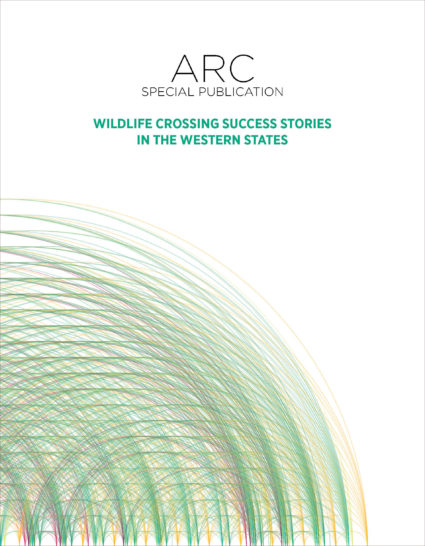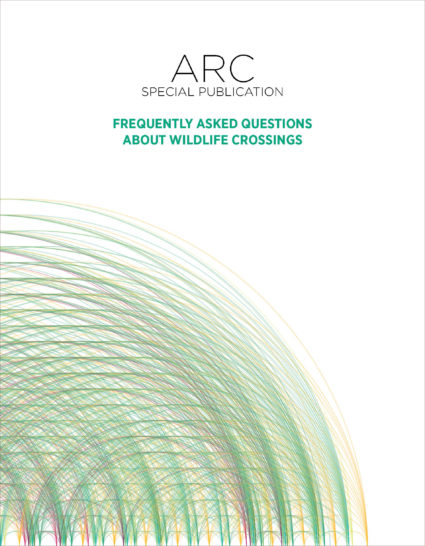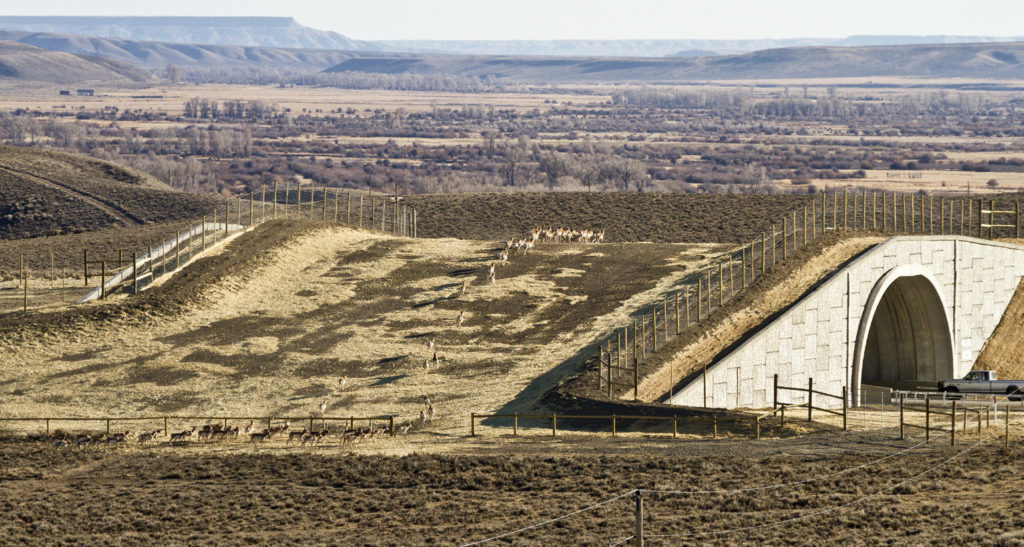Every 26 seconds—or less—a driver hits an animal, making highways one of the greatest barriers to wildlife movement in the United States. In addition to killing 1-2 million large animals every year, these collisions cause 200 human fatalities and more than 26,000 injuries, at a cost to Americans of more than $8 billion annually.
Road mortality is also a serious threat to 21 endangered and threatened species. The good news is there are proven solutions to this problem: Placed in areas of known wildlife movement, wildlife crossing structures with associated elements such as fencing have been shown to reduce motorist collisions involving wildlife by up to 97%.
Wildlife Crossing Success Stories in the Western States
 In celebration of how people from all walks of life are working together to solve this problem, ARC Solutions—a fiscally sponsored project of the Center for Large Landscape Conservation—worked with its partners and cooperating agencies to compile a series of stories to celebrate existing and planned wildlife crossing projects aimed at making our highways safer for both people and wildlife.
In celebration of how people from all walks of life are working together to solve this problem, ARC Solutions—a fiscally sponsored project of the Center for Large Landscape Conservation—worked with its partners and cooperating agencies to compile a series of stories to celebrate existing and planned wildlife crossing projects aimed at making our highways safer for both people and wildlife.
Although ARC ultimately plans to highlight stories from across North America, including all 50 States as well as Canada and Mexico, this initial version focuses on efforts to protect wildlife movement corridors and prevent wildlife-vehicle collisions made by 11 western states: Arizona, California, Colorado, Idaho, Montana, Nevada, New Mexico, Oregon, Utah, Washington, and Wyoming.
This showcase of initiatives features a diversity of species, from toads to pronghorn to mountain lions; a range of landscapes, from urban to rural and in between; and a host of public and private partners, from federal, tribal, state and local agencies, to private companies, non-governmental organizations, philanthropic foundations and other stakeholders. View publication >>

Frequently Asked Questions About Wildlife Crossings
 A new publication by ARC Solutions features answers to the most common inquiries and misconceptions regarding wildlife-vehicle collisions and the proven success of wildlife crossing infrastructure in solving this ubiquitous problem. Often, the available scientific literature, peer-reviewed publications, and technical resources are long, complex, and not easily digestible. Developed in collaboration with leaders in the research and implementation of wildlife crossings, the most current and accurate information has been distilled within this concise compilation in a question-and-answer format. View publication >>
A new publication by ARC Solutions features answers to the most common inquiries and misconceptions regarding wildlife-vehicle collisions and the proven success of wildlife crossing infrastructure in solving this ubiquitous problem. Often, the available scientific literature, peer-reviewed publications, and technical resources are long, complex, and not easily digestible. Developed in collaboration with leaders in the research and implementation of wildlife crossings, the most current and accurate information has been distilled within this concise compilation in a question-and-answer format. View publication >>
About ARC Solutions: ARC Solutions is an international network whose mission is to identify and promote leading-edge solutions to improve human safety, wildlife mobility and long-term landscape connectivity. We do this by fostering innovation in the placement, design and construction of wildlife crossings. We know these are solutions that work, and we seek to share this knowledge to build support for safe passage. A network of nonprofit, private, public, academic, and philanthropic partners in the U.S. and Canada, the ARC partnership is fiscally sponsored by the Center for Large Landscape Conservation.
This project was made possible through the generous support of ARC’s funders, including the New-Land Foundation and the Yellowstone to Yukon Conservation Initiative.
This article originally appeared on the ARC Solutions website
Watch (RE)CONNECTING WILD (12 min):



